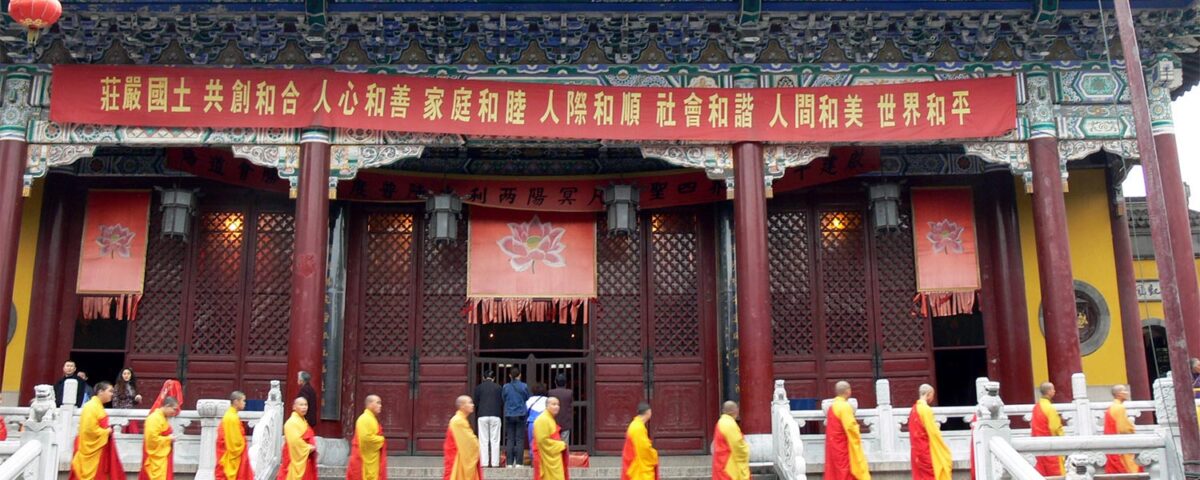
Hall of Sakyamuni of Zhenjiang Jinshan Temple. Gisling of Wikimedia Commons.
The Liberation Ritual of Water and Land (水陸法會, usually known as the Water-land Ritual) is one of the greatest rituals in Chinese Buddhism. Performed in temples and presided over by high monks, the ritual aims at inviting all celestial and enlightened beings of higher realms to relieve the sufferings of the lower realms. The Water-land Ritual was traditionally attributed to Emperor Wu of Liang Dynasty who had allegedly organized the first Water-land Ritual in the Jinshan Monastery of Zhenjiang. In the past decade, the rich intellectual and material culture of the ritual has received much scholarly attention. To communicate the newest scholarship on this ritual and to explore its original sites and materials, Prof. Eugene Wang organized a two-day field trip and a research workshop to Zhenjiang in June 2018.
- Field Trip on June 18–19, 2018 to Jinshan Monastery in Zhenjiang, China
The field trip, led by Prof. Eugene Wang and attended by Harvard graduate students, visited Jinshan Monastery in Zhenjiang, where the first Water-land Ritual was allegedly held. The topography, the history, as well as the legends of the area provided the Harvard research team fresh experience and understanding of the context of the ritual.
- Research Workshop on June 29, 2018 at the Harvard Center in Shanghai, China
Following the field trip, a one-day research workshop on the ritual was held at the Harvard Center in Shanghai on June 29, 2018. The workshop brought together the leading scholars of the Water-land Ritual in China, including Prof. Hou Chong from Shanghai Normal University, Prof. Cao Lin from National Academy of Social Studies, and Dr. Sun Bo from the National Library. Chaired by Prof. Wang, the workshop shared new discoveries and interpretations of the historical texts and paintings associated with the ritual. The scholars discussed major research issues such as the historical date of the creation of the ritual, the local variations of the ritual, as well as its relationship with Daoist rituals. Moreover, the workshop explored the potential of presenting the Water-land Ritual culture to the general public through cutting-edge digital technologies.
